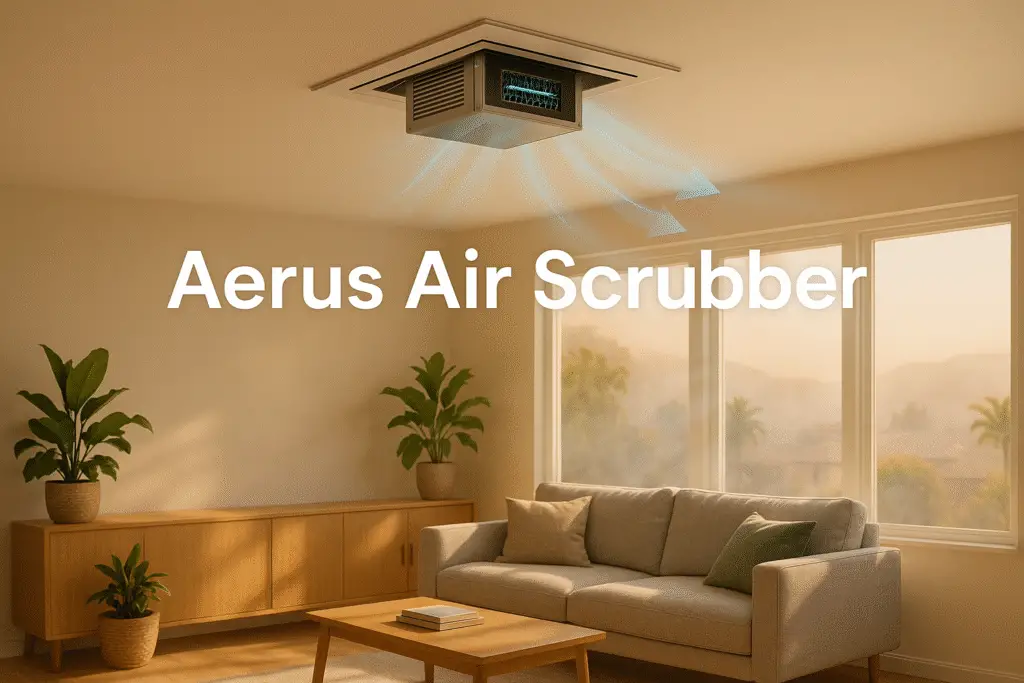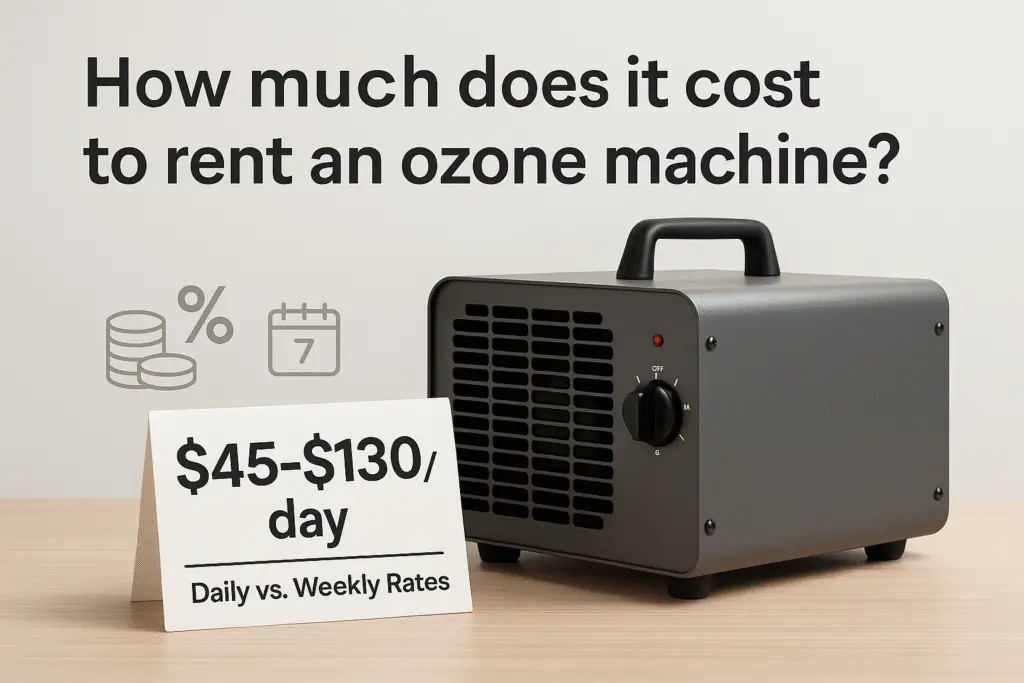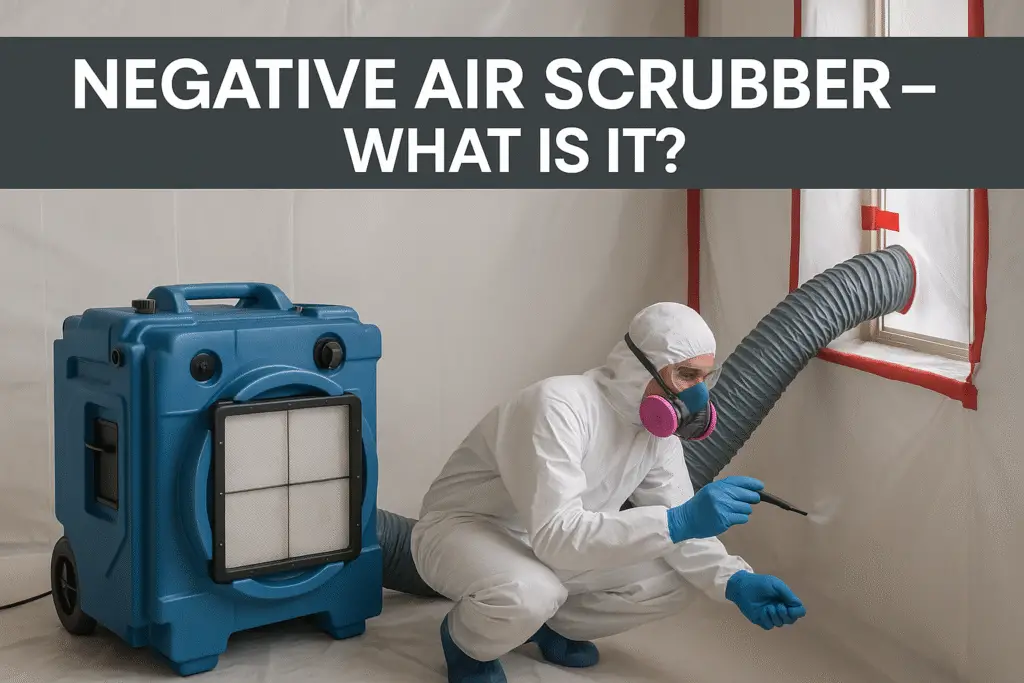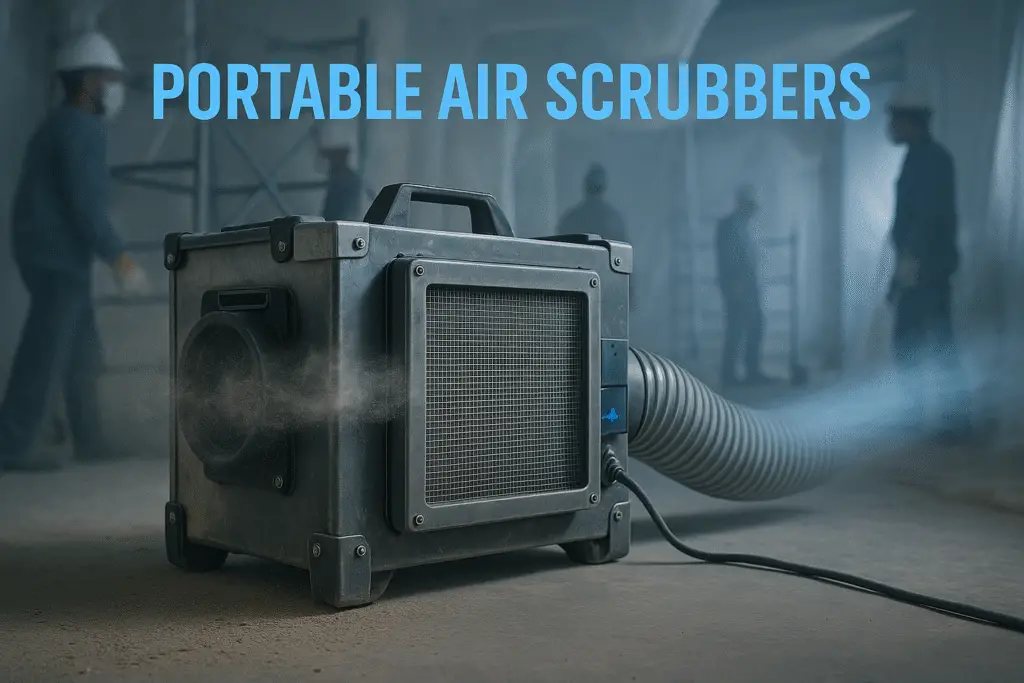For California homeowners battling wildfire smoke and allergy season, indoor air quality becomes critical. The Aerus Air Scrubber eliminates airborne threats using ActivePure® technology – a NASA-derived system integrated with your HVAC. This CARB-certified solution offers three key benefits: removes 99% of allergens, operates below strict ozone safety limits, and purifies air throughout your entire home. Our guide examines its technology, real-world wildfire performance, and cost-effectiveness.
What is the Aerus Air Scrubber? (Definitional)
The Aerus Air Scrubber is a whole-house air purification system that destroys contaminants using ActivePure® technology. This advanced process combines UV-C light with photocatalytic oxidation to neutralize pollutants rather than just filtering them. The system installs directly into existing HVAC ductwork to clean air throughout your home.
| Feature | Detail |
|---|---|
| Coverage Area | Up to 3,000 sq. ft. |
| Installation | HVAC-integrated |
| CARB Certification | Ozone emissions <0.05 ppm |
| Contaminant Targets | Viruses, mold, VOCs, smoke particles |
Developed from NASA space station research, ActivePure creates hospital-grade air purification. This foundation explains how the technology actively destroys pathogens rather than just trapping them.
How ActivePure Technology Works: A Step-by-Step Breakdown (How-To)
ActivePure doesn’t just trap contaminants—it destroys them through 4 stages:
| Photo | Popular Air Purifiers | Price |
|---|---|---|

|
Air Purifiers for Home Large Room up to 1500ft², Tailulu H13 True HEPA Air Purifier for Pets Dust Odor Smoke, Air Purifier for Bedroom with 15dB Quiet Sleep Mode for Bedroom Office Living Room | Check Price On Amazon |
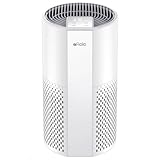
|
Afloia Air Purifier for Home, 4-in-1 Washable Filter for Allergies, Covers Up to 1076 ft², Quiet Operation, Auto Shut-Off & Night Light, Removes Pet Dander, Pollen, Dust, Mold, and Smoke, White,Pluto | Check Price On Amazon |

|
Nuwave OxyPure ZERO Air Purifier with Washable and Reusable Bio Guard Tech Air Filter, Large Room Up to 2002 Ft², Air Quality Monitor, 0.1 Microns, 100% Capture Irritants like Smoke, Dust, Pollen | Check Price On Amazon |

|
Air Purifiers for Home Large Room Up to 1,996 Ft², EOEBOT Air Purifier for Home Pets with Washable Filter, Quiet Sleep Mode, Air Quality Monitor, Air Purifier for Bedroom, Pet Hair, Dust, Smoke, White | Check Price On Amazon |

|
Afloia 2 IN 1 Air Purifier with Humidifier Combo, 3-Stage Filters for Home Allergies Pets Hair Smoker Odors, Evaporative Humidifier, Auto Shut Off, Quiet Air Cleaner with Seven Color Light,White | Check Price On Amazon |
- Stage 1: Air enters the unit through your HVAC system and passes over UV-C lamps
- Stage 2: Light reacts with a honeycomb matrix to create hydroperoxide molecules
- Stage 3: These molecules break down viruses and pollutants at molecular level
- Stage 4: Purified air circulates back through your ventilation system
Imagine the process like sunlight breaking down chemicals in nature, but accelerated. A UC Davis study showed 87% VOC reduction during wildfire simulations. The system continuously treats air as it circulates through ducts, covering all rooms.
Safety Deep Dive: Does Aerus Produce Ozone? (Boolean)
Yes, Aerus produces minimal ozone below harmful thresholds. At <0.05 ppm emissions, it’s certified safe by California’s Air Resources Board (CARB). This is significantly lower than EPA’s danger threshold.
| Source | Ozone (ppm) | Safety Status |
|---|---|---|
| Aerus Air Scrubber | <0.05 | CARB-certified safe |
| EPA Hazard Threshold | 0.07 | Unsafe for prolonged exposure |
| Typical Urban Air | 0.03-0.06 | Background levels |
Per 2023 CARB standards, any device under 0.05 ppm is considered ozone-safe. Pediatricians confirm: “These levels pose no risk to asthmatic children.” For added safety, consider CARB-certified air purifiers as alternatives.
Real-World Performance: Mold, Wildfire Smoke & Allergens (Grouping)
Beyond lab tests, Aerus tackles California’s top air quality threats:
- Wildfire Smoke: UC Davis tests showed 92% PM2.5 reduction within 24 hours during controlled simulations. Essential for wildfire smoke protection.
- Mold Removal: Reduces airborne spores below EPA-recommended 1,000 spores/m³ levels within 48 hours
- Allergens: Consumer Reports measured 99% pollen and dust reduction in whole-home environments
Note: Requires HVAC runtime and doesn’t reduce CO2 levels. Ideal for homeowners needing comprehensive protection against environmental pollutants.
Cost and Value Analysis: Is Aerus Worth the Investment? (Comparative)
With a $1,200+ upfront cost, Aerus justifies its price through long-term savings and whole-home coverage:
| Cost Type | Aerus | Portable HEPA |
|---|---|---|
| Unit Price | $1,200 | $300-$600 |
| Annual Filter Costs | $60 | $120-$200 |
| Energy Use/Year | $30 | $50-$100 |
Pros: Covers entire homes (no multiple units needed), minimal maintenance
Cons: Professional installation required ($300-$500 average)
ROI: Breaks even in 3 years for allergy sufferers compared to premium portable units. HVAC integration means it works automatically with your existing system.
Aerus vs. Alternatives: Air Scrubber Plus, HEPA & Renters’ Solutions (Comparative)
How Aerus stacks up against top competitors and renter-friendly options:
| Feature | Aerus | Air Scrubber Plus | Portable HEPA |
|---|---|---|---|
| Ozone Production | <0.05 ppm | 0.06 ppm | None |
| Coverage | Whole-house | Whole-house | Single room |
| Renters Friendly | No | No | Yes |
Renter solutions: Consider CARB-certified portable units like the BlueAir Blue Pure 211+ or Coway Mighty. Whole-house systems require permanent HVAC modification.
Installation and Maintenance: DIY Tips & Professional Guidance (How-To)
While professional install is ideal, homeowners can prepare with these steps:
- Pre-installation: Verify HVAC compatibility – needs 24″ clearance near air handler
- Professional install: Costs $300-$500 vs DIY risks of improper sealing
- Maintenance: Clean metal filter quarterly (watch official video demonstration)
Troubleshooting tip: No airflow? Ensure HVAC fan is set to “ON” not “AUTO”. For optimal performance, follow our DIY HVAC care checklist between professional servicing.
